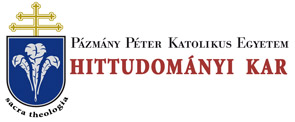Folia Theologica 16. (2005)
Pál Bolberitz: The Beginnings of Hungarian Philosphy (The Reception of Nicholas of Cusa in the work of "De homine" by Peter Monedulatus Csokas Laskoi)
24 P. BOLBERITZ acquired the renaissance spirituality so that he was able to throw a new light upon the Christian doctrine. The supposition is not entirely ungrounded: if his contemporaries would have known him thoroughly and even eveluated the world of Cusanus' ideas, Reformation could have been avoided. Laskoi seems to belong to those who appreciated Cusanus, who himself based his philosophy37 rather on Platonism than Aristotelism. Cusanus in his system put an emphasis on the dialectics of unity and multiplicity, and Laskoi seems to implement the idea of micro and macrocosmos, or - by expanding it - the idea of the very proper relationship between God and the world, which - in spite of his peculiarity -, can be accepted by the Christian theology. Peter Csókás Laskoi in the first chapter of the Book One in "De homine" writes about the multiplicity of the universe, or the division of the entire world. He outlines the general conception of his age, enlisting the so called world-divisions of the ancient and renaissance thinkers who supposed the existence of several worlds38. He himself prefers the viewpoint of the excellent renaissance thinker, Cusanus, in establishing his philosophical anthropology. He writes the following: "Nicolaus Cusanus in the 14th chapter of the Book One of his "De coniccturis" (On Conjectures) very expertly differentiates three worlds, the upper, the middle and the lower.39 37 Nicolaus Cusanus (Chrypffs after the name of the family) (1401-1464) was born at Cues on the Moselle. He studied law in Heidelberg, then at Padua, afterwards attended the lectures on physics by Toscanelli. He was a lawyer in Mainz, he decided to choose a clerical state, and began to study theology. After being ordinated, he was nominated to high positions of the church, as a member of the papal delegation he was nominated a bishop first in Byzantium, afterwards in Brixen Nicholas of Cusa wrote several works, among them the most prominent are: „De docta ignorantia”, „De coniecturis”, „De ludo globi”, „De venatione sapientiae”, „Idiota de sapientia”, „De concordantia catholica”, „De pace fidei”, „De possest”, „De non aliud”. He became reputant in theology and philosophy by elaborating the definition called „coincidentia oppositorum”, coinciding the immanency and transcendency of God. 38 Cp. LASKOI „De homine”, Liber I. cap. I. pp. 6-9. 39 Cp. LASKOI, „De homino”, Lib. I. cap. 1. p 18. „Nicolaus Cusanus tom. 1. libro 1. ’de coniecturis’ cap. 14. tres mundos non inconvenienter numerat; Supremum, medium et infirmum. Supremi centrum dicit Deum esse: Medii sive secundi intelligentiam: ultimi rationem. Ex guo intelligimus, tres illuni mundos statuere, Intelligibilem quem supremum vocat: Sensibilem, quem
